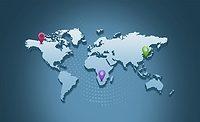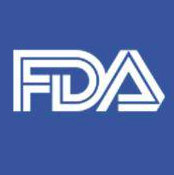WHO and FAO Highlight Role of Science, Stress Importance of Technology in Food Safety Efforts

The principal scientists of the Food and Agriculture Organization of the United States (FAO) and the World Health Organization (WHO) hosted a webinar recently and highlighted the role of science in keeping food safe, while stressing the importance of technology.
The virtual event was organized by FAO and WHO in honor of the third annual World Food Safety Day.
More than 600 people attended the event, and FAO Director General Qu Dongyu and WHO Director General Tedro Adhanom Ghebreyesus spoke during it.
Ghebreyesus said that nobody should die from eating food, as these are preventable deaths. When food safety is improved, we can reduce hunger, malnutrition, and infant mortality, he said. In addition, children miss fewer days at school, adults increase their productivity, and the strain on health systems is reduced.
Soumya Swaminathan, chief scientist at WHO, also gave remarks, saying it's important to understand the nature and level of hazards in the food chain because interventions to ensure food safety depend on understanding, which will have the most impact in reducing the risk of foodborne illness.
She said that one of WHO's priorities is to help member states make evidence-informed decisions on risk management, and that scientific advice provided by the WHO and FAO to Codex, also known as the "Food Code," is critical for the development of food safety international standards.
Swaminathan also said that whole-genome sequencing should be used more widely in food safety, and that it's more widely available now but is still limited in many countries. She also said that one of the lessons from the pandemic is that we need to invest in laboratory space and train bioinformatics experts.
Ismahane Elouafi, chief scientist at FAO, talked about the recently published Microbiological Risk Assessment Guidance for Food, which provides a framework to assess the risk of microbiological hazards using different techniques. She said that whole-genome sequencing allows us to better understand epidemiological surveillance, food testing, monitoring, and outbreak investigation, but we also need to do more, such as implement policies and regulation to provide a better environment to use those technologies to protect us and increase the safety of our food systems.
“We need to use more artificial intelligence, blockchain and intelligent packaging that can ensure food is authentic, safe and of good quality from the farm level to the consumer," Elouafi said.
She finished her remarks by talking about technology that we have now, versus 10 years ago, and how that affects food safety today.
“We are in an era where we have the ability to gather and analyze big data and connect the different things. We didn’t have that power 10 years ago. The last technology I want to mention is nanotechnology. We are able to see and change things that are very small. Cell-based meat and lab-grown dairy are new technologies we need to invest more in and put them in perspective and provide with the safety net, the right policies and the right connections," she said.
Looking for a reprint of this article?
From high-res PDFs to custom plaques, order your copy today!








